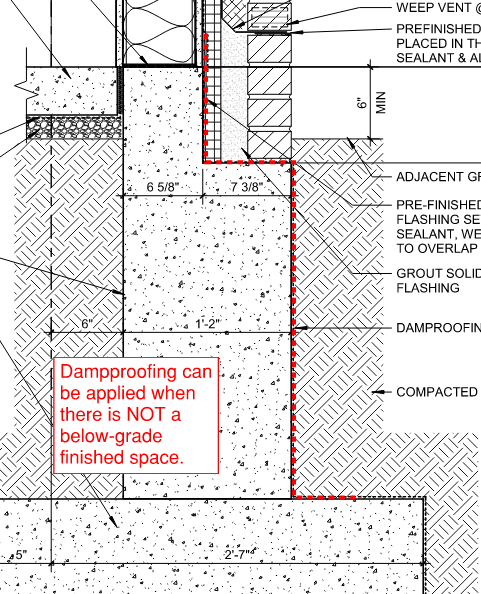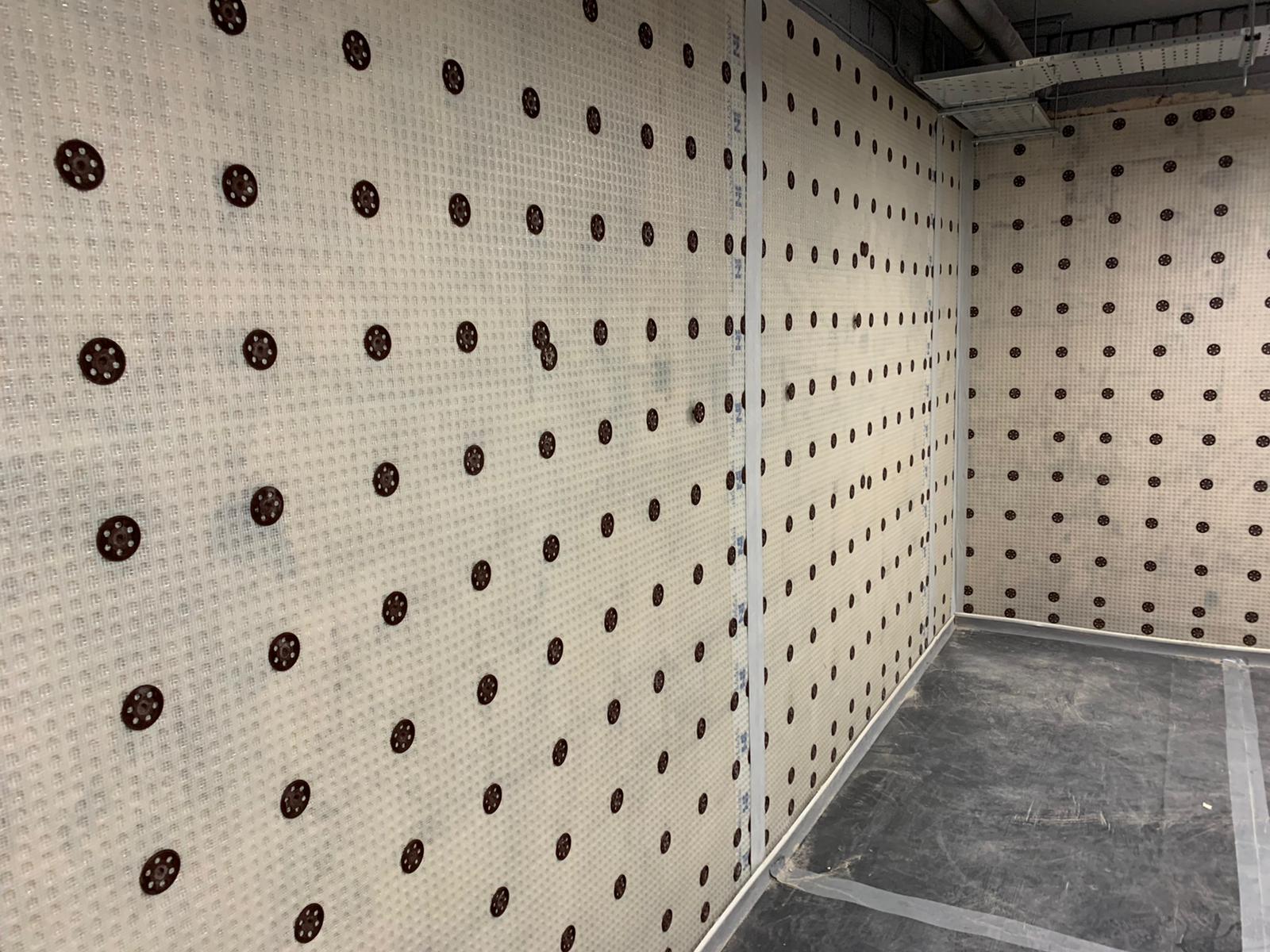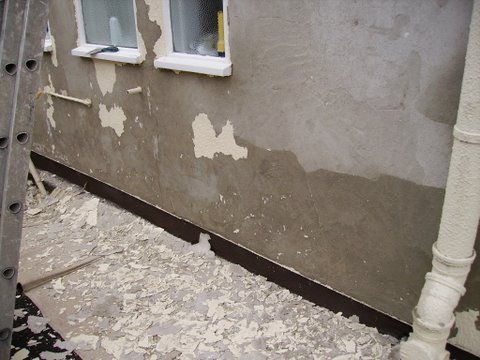Comprehensive list for damp specialist newcastle to identify moisture issues early
Comprehensive list for damp specialist newcastle to identify moisture issues early
Blog Article
Checking Out the Various Methods and Solutions for Effective Damp Proofing
Wetness in structures presents considerable obstacles to both structural integrity and indoor air top quality. Numerous techniques and remedies have emerged to fight this prevalent concern. From conventional damp-proof membrane layers to cutting-edge chemical therapies, each method uses distinct advantages. Recognizing these alternatives is vital for reliable wetness control. Selecting the right remedy depends on certain structure problems and needs, triggering additional exploration into the most effective wet proofing methods offered.
Comprehending the Reasons of Dampness
Moisture can develop from numerous sources, comprehending these causes is crucial for effective removal. Commonly, dampness stems from three primary sources: climbing damp, penetrating damp, and condensation. Rising moist happens when groundwater travels up via permeable materials, such as brick or stone, frequently because of an absence of a reliable barrier (mould treatment newcastle). Permeating moist is usually triggered by external variables, including roof leaks, malfunctioning rain gutters, or harmed walls, allowing water to infiltrate a home. Condensation, on the other hand, results from excess moisture in the air, usually aggravated by inadequate ventilation and temperature level differences, leading to water beads basing on surfaces. Identifying these underlying concerns is necessary, as each kind of dampness calls for a customized approach for remediation. Correct assessment helps in identifying the most efficient services, eventually guarding the structural stability of a structure and improving interior air quality
Typical Damp-Proof Membranes

Chemical Damp-Proofing Solutions
Chemical damp-proofing remedies use an innovative method to avoid dampness intrusion in buildings. These approaches commonly include the application of fluid chemicals that pass through stonework and develop a barrier against rising wet. Frequently used chemicals consist of silanes, siloxanes, and various other water-repellent agents that respond with surface products to develop a hydrophobic layer.The application procedure normally needs drilling openings into the wall surfaces, injecting the chemical option, and allowing it to cure. This approach is especially useful for older structures where conventional damp-proof membranes might be impractical. Chemical damp-proofing can be less disruptive and much more cost-efficient than considerable restoration projects.While efficient, these options depend on proper application and ecological conditions for peak efficiency. mould removal newcastle. Regular upkeep and surveillance are vital to ensure the long life of the damp-proofing treatment. On the whole, chemical damp-proofing stands for a flexible option for protecting buildings versus moisture-related damages
Cavity Wall Building And Construction Strategies
Dental caries wall construction strategies offer countless benefits, particularly in wetness control and power effectiveness. By including an air gap between 2 layers of stonework, these wall surfaces successfully mitigate water access while boosting insulation. This mix not just shields frameworks from moisture yet additionally adds to lowered energy consumption.
Benefits of Cavity Wall Surfaces
When thinking about reliable damp proofing techniques, the benefits of cavity wall surfaces stick out prominently. Tooth cavity walls contain 2 different layers, creating an air gap that efficiently reduces wetness infiltration. This layout decreases the risk of wetness, as the outer wall surface works as a barrier against rain and water access. Furthermore, cavity walls boost thermal insulation, which adds to energy efficiency by lowering heat loss. They additionally offer sound insulation, aiding to develop a quieter indoor environment. Additionally, the air space enables ventilation, which aids in wetness control and reduces the likelihood of mold development. These benefits not only boost the general convenience of a building but additionally add to its durability and architectural integrity.
Moisture Control Methods
Reliable dampness control techniques are crucial in dental caries wall surface building to guarantee long-term protection versus wetness. One key approach involves the unification of weep holes, which facilitate water drain from the cavity, stopping build-up. In addition, making use of breathable membranes can help manage moisture degrees while permitting entraped vapor to escape. Proper placement of insulation is additionally important, as it ought to not block drainage paths. Moreover, guaranteeing that the outer fallen leaves of the cavity wall are created with waterproof materials boosts overall durability. Normal maintenance checks are vital to identify any type of blockages or damages early, securing the framework's stability. Eventually, a mix of these techniques forms a durable defense against moisture intrusion in tooth cavity walls.
Insulation and Energy Efficiency
Insulation plays a crucial function in improving energy effectiveness within tooth cavity wall building and construction. By including protecting products, these walls produce a thermal barrier that minimizes heat loss and minimizes energy consumption. Effective insulation not just assists keep a stable indoor temperature level yet additionally mitigates the danger of dampness, as it prevents condensation within the wall dental caries. Numerous techniques, such as the usage of stiff foam boards or mineral woollen, can be employed to attain optimal insulation efficiency. Furthermore, correct installment is vital to guarantee that voids and spaces are minimized, which can or else compromise energy effectiveness. Ultimately, a well-insulated dental caries wall adds considerably to overall sustainability and decreases home heating and air conditioning costs for homeowners.
External Damp Proofing Methods
External damp proofing techniques are essential for shielding frameworks from wetness seepage. Two effective strategies include the application of water resistant membranes and the installment of French drains. These solutions assist reduce water accumulation and maintain the integrity of buildings.
Waterproof Membrane Application
While numerous approaches exist for stopping wetness access, the application of water resistant membrane layers continues to be a highly effective exterior moist proofing method. These membrane layers are usually made from materials such as polyethylene, rubber, or customized bitumen, supplying a durable obstacle against water penetration. The setup process includes applying the membrane to the exterior surfaces of structures or walls, making sure total insurance coverage to stop leakages. Correct attachment and sealing at here joints are important to making the most of effectiveness. Water-proof membrane layers can be used in various forms, including fluid finishings and sheet membranes, permitting adaptability based upon the certain demands of the structure. This approach not only shields buildings from dampness yet likewise boosts their durability and structural stability.
French Drainpipe Installment
One efficient method for taking care of groundwater and protecting against wetness buildup around a building's structure is the installation of a French drainpipe. This drain system is composed of a trench filled with crushed rock and a perforated pipe that redirects surface water far from the structure. Correct setup requires careful planning, ensuring that the drainpipe inclines away from the structure to promote ideal water flow. Furthermore, the area of the drainpipe is important; it must be positioned in locations prone to merging or excess wetness. Routine upkeep, including clearing up particles from the gravel and making sure the pipe continues to be unhampered, is vital for lasting effectiveness. Ultimately, a well-installed French drain can considerably lower the risk of water-related concerns in foundations and basements.
Interior Waterproofing Techniques
Interior waterproofing strategies are vital for protecting a structure's inside from dampness seepage and possible water damages. These methods usually include the application of customized materials and techniques developed to produce a dampness barrier within the framework. One usual approach is using waterproof finishes or sealants on wall surfaces and floorings, which protect against wetness from permeating surfaces.Additionally, mounting indoor water drainage systems, such as sump pumps, can properly manage water accumulation in basements and creep areas. An additional method involves the use of vapor obstacles, which are set up to prevent wetness movement from the ground into living spaces.Moreover, attending to any type of splits or spaces in wall surfaces or foundations with suitable sealants guarantees a comprehensive defense versus water invasion. By implementing these interior waterproofing strategies, homeowner can significantly decrease the threat of mold growth, architectural damages, and various other moisture-related issues. Proper implementation of these strategies is vital for long-lasting protection and structure honesty.
Regular Maintenance and Inspection Practices
Routine upkeep and examination practices are important for assuring the lasting effectiveness of damp proofing services in any building. Regular checks make it possible for homeowner to identify very early indications of dampness breach, such as peeling paint, mold and mildew growth, and musty odors. These indications can indicate underlying issues that require immediate attention.Inspections should be performed at the very least annually, concentrating on prone locations like cellars, creep areas, and exterior walls. During these analyses, homeowner need to analyze sealers, drain systems, and air flow to verify they work correctly.Additionally, keeping downspouts and gutters is vital, as blocked systems can result in water accumulation near the foundation. Applying a regular upkeep timetable, in addition to prompt fixings, can significantly expand the lifespan of moist proofing actions and shield the architectural honesty of the structure. Positive measures ultimately add to the total health and safety of the living setting.
Frequently Asked Inquiries
How Much Time Does Damp Proofing Commonly Last?
The duration of moist proofing effectiveness differs, commonly lasting between 20 to 50 years. Elements such as application quality, environmental conditions, and upkeep methods greatly influence the long life of the damp proofing treatment.

Can I Damp Evidence My Home Myself?
The individual pondered the expediency of do it yourself damp proofing. With correct research study and the best products, it is feasible. They likewise acknowledged the relevance of expert guidance to ensure long-lasting effectiveness and prevent future concerns.
What Are the Indications of Inefficient Damp Proofing?
Indicators of inefficient damp proofing consist of consistent stuffy odors, noticeable mold and mildew growth, peeling off paint, wet spots on walls, and wood decay - mould removal newcastle. Homeowners must address these problems promptly to stop additional damages and health issues
Does Damp Proofing Affect Indoor Air High Quality?

Just How Much Does Expert Damp Proofing Price?
Expert wet proofing prices vary considerably, commonly varying from $1,000 to $5,000 depending upon the residential or commercial property's size, the extent of the moist problem, and selected techniques. Each situation needs a tailored assessment for precise pricing. Commonly, moisture originates from 3 primary sources: climbing wet, permeating wet, and condensation. When thinking about effective wet proofing methods, the advantages of cavity walls stand out plainly. Outside wet proofing approaches are crucial for shielding frameworks from moisture infiltration. While various approaches exist for stopping wetness ingress, the application of water-proof membrane layers stays a very reliable external moist proofing strategy. Signs of ineffective damp proofing include consistent stuffy smells, visible mold growth, peeling paint, damp spots on wall surfaces, and wood decay.
Report this page